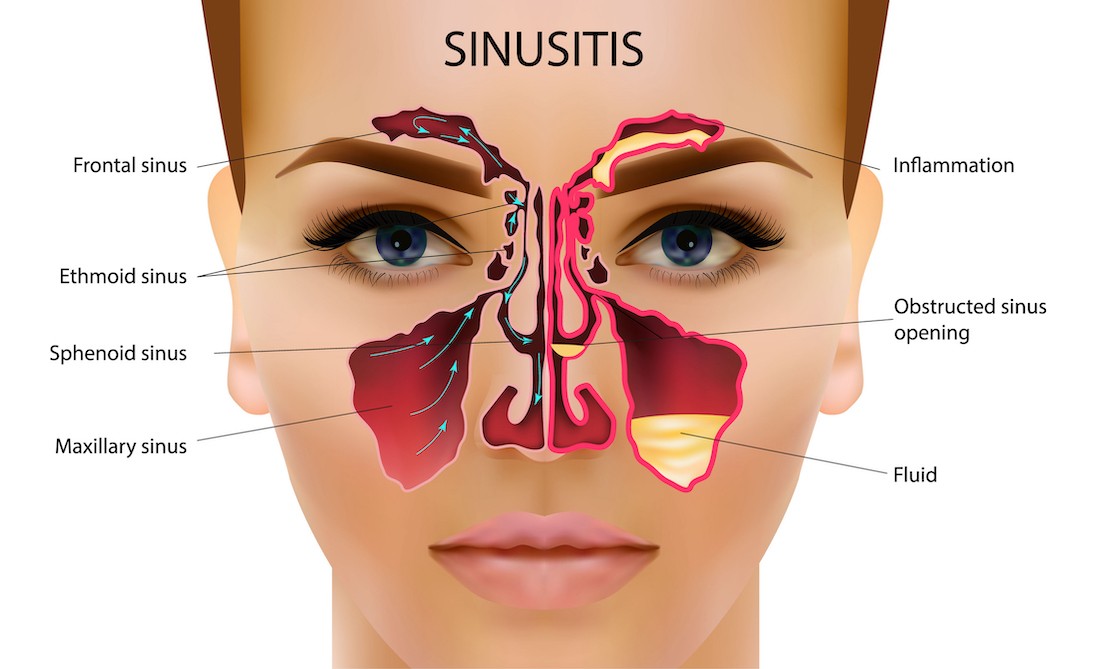What Is Balloon Sinuplasty, and Do I Need One?
If you suffer from chronic sinusitis or other sinus-related issues, you may have heard of a procedure called balloon sinuplasty. But what is balloon sinuplasty, and do you need it? Let's explore this treatment option.
Overview
Balloon sinuplasty is a minimally invasive surgery to clear blocked sinuses and restore normal drainage and breathing. The FDA approved this chronic sinusitis treatment in 2005, and it has been shown to be safe and effective for many people who suffer from the symptoms of chronic sinusitis.
The procedure is simple; a wire with a deflated balloon is inserted through the nostril and into the blocked sinus. The balloon is then carefully inflated to widen the sinus opening and allow previously accumulated mucus and pus to drain out.
A balloon sinuplasty is a relatively simple procedure with minimal complications. No tissue or bone is cut or removed during this process. A big benefit of this is that doctors can perform this operation at their office. Patients experience less pain, scarring and a significant faster recovery time than traditional sinus surgery.
When is balloon sinuplasty necessary?
Determining if you need a balloon sinuplasty procedure depends on your specific anatomy, complications and conditions. Your physician will conduct a thorough evaluation to check if this treatment can be an option to treat your condition. Typically, balloon sinuplasty is recommended for patients with chronic sinusitis that has not responded to other treatments, such as antibiotics or nasal sprays, for more than twelve weeks.
Your doctor may also suggest you undergo CT (computer tomography) scans to confirm whether balloon sinuplasty is appropriate. This procedure may not be suitable for patients with nasal polyps or tumors.
Balloon Sinuplasty Procedure
Balloon sinuplasty can be done using either local or general anesthesia and often takes less than an hour to complete. Your doctor will insert a thin wire with a small balloon through your nostril and into your affected sinus cavity. You may feel some pressure during this portion of the procedure, but no pain as the balloon inflates and deflates inside your sinus.
While the balloon is in place, it will gently restructure the bones around the sinuses. After the process, the balloon will be removed, leaving the sinus passage widened and free of built-up pressure.
What To Expect After the Procedure
After balloon sinuplasty, patients can return to regular activities within a day or two. They may experience some swelling, fatigue, congestion, and bloody discharge from the nose for up to a week, which is normal.
Patients should not blow their nose for at least 24 hours and avoid strenuous activity for the first week. ENT doctors typically prescribe antibiotics and sometimes painkillers to promote healing and provide relief. You may also have to rinse your nasal passages with a saline solution for three to seven days.
Relief
After you recover from your out-patient sinuplasty, you will be amazed at your ability to breath through your nasal passages! Not only will you notice the ability to utilize your nasal passages while breathing again, but you will also experience significantly reduced sinusitis-related pain. Your quality of life will increase as a result of getting better sleep, reducing the stress on your body due to erratic sleep patterns. Patients are often amazed at how this simple procedure changes so many aspects of their health.
Consult With Trusted ENT Doctors
If you suffer from chronic sinusitis you may be eligible for a balloon sinuplasty procedure. Contact us at Queen City Ear Nose and Throat by phone (704) 703-1080 or using our online contact form to Schedule an appointment. Our doctors are truly interested in helping improve your quality of life through effective sinusitis treatment. Queen City Ear Nose and Throat has some of the most trusted ENT experts in Charlotte and Monroe, NC. They'll evaluate your condition and recommend the best treatment options.



